Our Top 5 most beautiful flowers
Aruba is no stereotypical tropical island of lush, steamy forest and constant rains. It does however, host a beautiful animal and plant live, some of which is found nowhere else but on this island. Most of the original plants are part of the cacti family. This is because Aruba has a dry and sunny climate, with little rain, in which only flew plants can survive. Of our top 5 most beautiful flowers, which one is your favorite?
1. Wanglo - National flower of Aruba
The Tribulus Cistoides, also called Wanglo, is the national flower of Aruba and it can be found as a wildflower on sandy soils along the coast and some open spots inland. It's a native of tropical America and now arises in many tropical and temperate regions. It can be seen as a beautiful groundcover which can grow into patches covering up to 5 meters in diameter. The Wanglo is not dispersed on a natural way by pollination and has spiny seedpods which easily attach to the fur of animals, as well as on clothing, shoes and vehicle and bicycle tires. It is also believed that the oceanic dispersal spreads the seeds to new places. The Wanglo is known to bloom from spring to fall in the sub-tropics and all year round in the tropics. The flowers open just after sunrise and close again at sunset, lasting about two days. They are bright yellow with 5 petals and broadly cuneate and are thought to be the inspiration for the yellow strips on the Aruba flag!
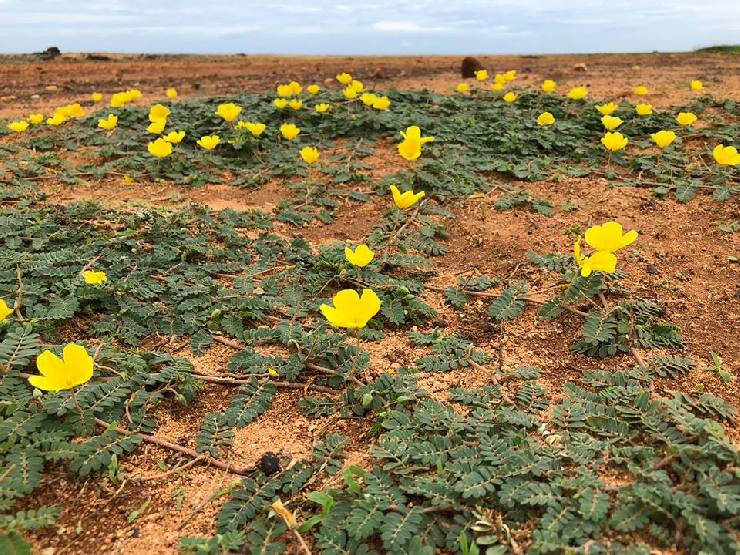
2. Frangipani
The Plumeria obtusa, also known as Frangipani, is a tree which can grow up to 80 meters and is especially known for the beautiful flowers, that scent at night to lure sphinx moths to pollinate them. Although the flowers produce a perfume, it has no nectar. The moths pollinate the Frangipani by transferring pollen from flower to flower in their fruitless search for the nectar. All flowers have five petals, mostly white or pink with a yellow center. They are about 5cm in diameter and grouped in clusters at the ends of the branches. The leaves are large and leathery and fall off before flowering. This plant is originally from Central and South America but is now cultivated and even naturalized in the tropics all over the world. The plumeria flowers represent birth and love, spring and new beginnings. Positive and hopeful symbols!
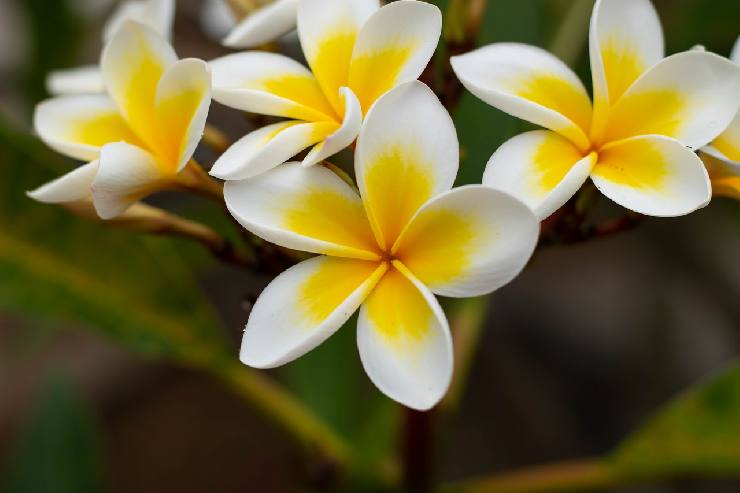
3. Tuturutu
A year-round feast for the eye as well as for hummingbirds, butterflies and bees. The name Tuturutu is Papiamento for Caesalpinia Pulcherrima, a descendant of the leguminous family and well presented on the Caribbean islands. It is the national flower of Barbados and may also be known as Barbados Pride, Dwarf Poinciana, Peacock Flower and Red Bird of Paradise. The Tuturutu is originally from Mexico and the Caribbean. It has thorny branches, soft green, fern-like leaves and beautiful showy orange, red and yellow flowers that grow in clusters of 40cm high. It can have as many as 40 flowers per raceme. The orange-red petals are lined with yellow, and they have long red stamens, hanging from the flower like peacock feathers. This plant enjoys full sun and therefore they blossom most of the year in the tropics. However, each individual flower only has a short life. The young flowers are often red and yellow and turn completely red on the second day, after which the stamens droop and the flowers shrivel again on the third day.
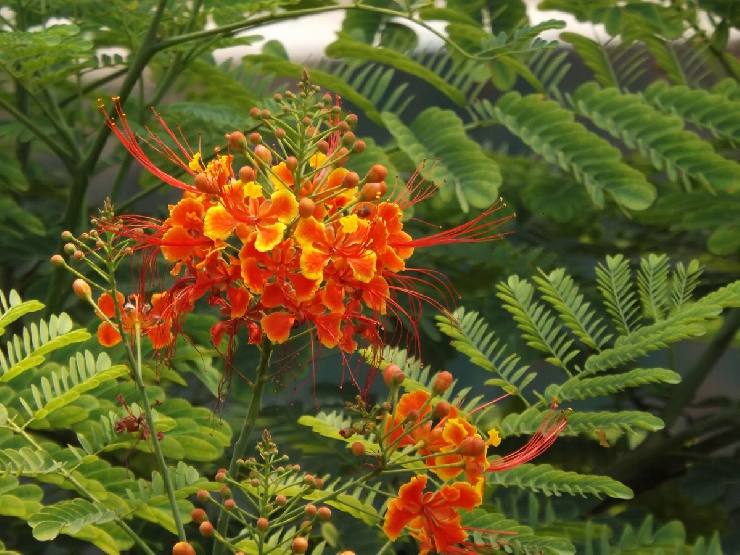
4. Impala Lily
The more common name of the Impala Lily is the Desert Rose, given to the plant as it is native to the desert regions of the Arabian Peninsula and of eastern Africa. Despite its name, the desert rose is not an actual rose but a succulent, just like cacti. They adopt very well to the tropical and semi-tropical settings and is therefore an often-seen flower in Aruba. It has a beautiful appearance with an oddly shaped, enormously thickened trunk, dark green glossy leaves, and trumpet-shaped flowers. The swollen stem on older plants, with smooth and grey bark, often resemble a bonsai tree. It can grow 1 to 3 meter (3.3 – 9.8ft) and does very well in hot climates. These plants love to be in the direct sun with temperatures of at least 70°F and up to 100°F. The flowers are long-lasting and appear on the plant several times a year. The blooms are attractive to hummingbirds and pollinators such as bees and butterflies. They vary in color from white and pink to deep red, often with a whitish blush outward of the throat.
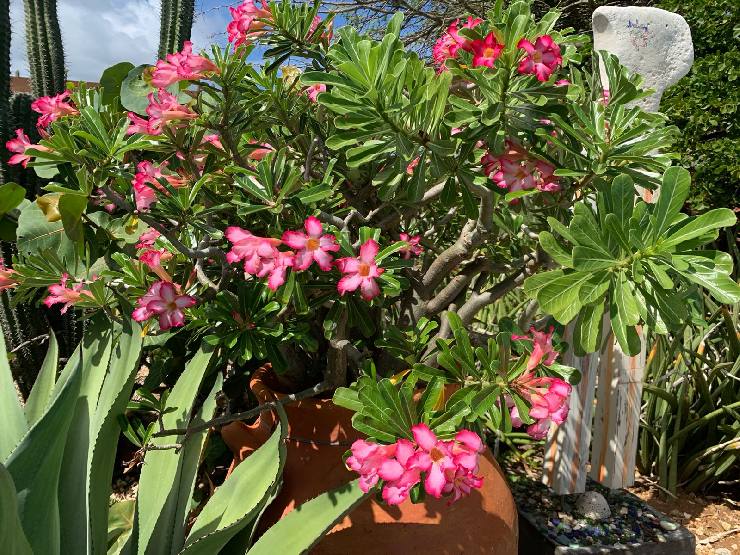
5. Bougainvillea
The Bougainvillea is a beautiful, colorful plant which is originally from central and south America but now is widely spread in the countries around the Mediterranean, Florida and southern Asia through cultivation. The true flowers of the bougainvillea are actually quite small, usually white, and they are surrounded by colorful, papery, bracts. The bracts are the real showstoppers and come in exciting tints of red, orange, purple, pink and white. The bracts, often called “false flowers,” are what attract pollinators to the true flowers hidden within. This plant is a woody climber, with spines along the branches that permit them to hold to various types of supports. They are therefore often used for embellishing partitions such as trellises and garden fences. The bougainvillea grows rapidly and blooms all year round in warm and sunny climates. In colder climates it will go inactive when brought in for winter and will bloom mainly in the summer through September.
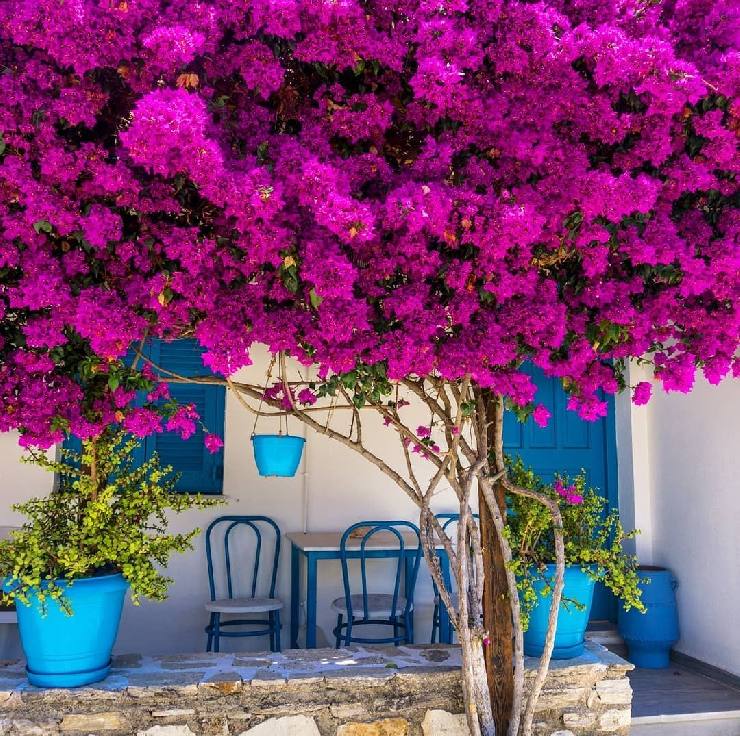
One last tip: in our Sunset garden you can spot numbers 2, 3, 4 and 5. If you cross the street in front of our property, you will find number 1. If you have trouble finding all 5, please let us know and we will gladly help you!
